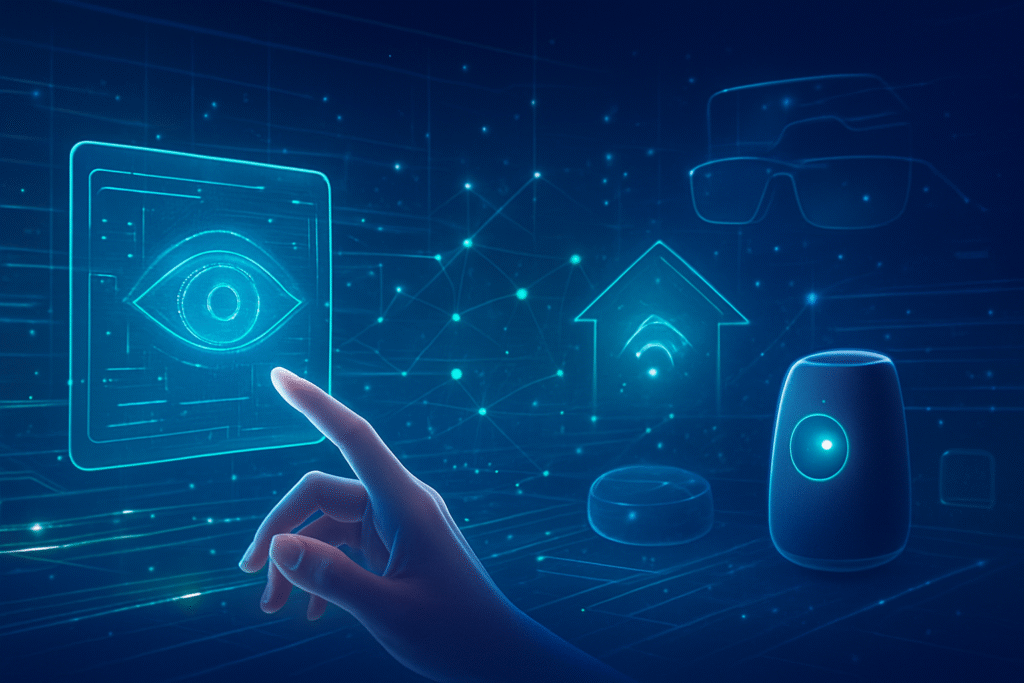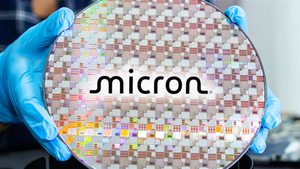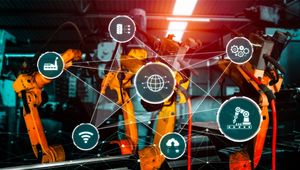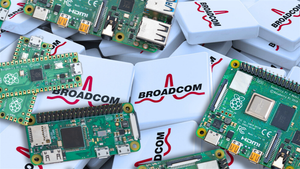
As 2025 draws to a close, the consumer electronics landscape is undergoing a profound metamorphosis, transcending the smartphone-centric paradigm that has dominated for over a decade. The immediate significance of this shift lies in the accelerating integration of Artificial Intelligence (AI) into every facet of our digital lives, giving rise to a new generation of devices that are not merely smart, but truly intelligent, anticipatory, and seamlessly woven into the fabric of our existence. From immersive AR/VR experiences to intuitively responsive smart homes and a burgeoning ecosystem of "beyond smartphone" innovations, these advancements are fundamentally reshaping consumer expectations towards personalized, intuitive, and sustainable technological interactions. The global consumer electronics market is projected to reach a staggering $1.2 trillion in 2025, with AI acting as the undeniable catalyst, pushing us into an era of ambient computing where technology proactively serves our needs.
Technical Marvels Defining the Next Generation
The technical underpinnings of this new wave of consumer electronics are characterized by a potent fusion of advanced hardware, sophisticated AI algorithms, and unified software protocols. This combination is enabling experiences that were once confined to science fiction, marking a significant departure from previous technological approaches.
In the realm of Augmented Reality (AR) and Virtual Reality (VR), late 2025 sees a rapid evolution from bulky prototypes to more refined, powerful, and comfortable devices. AI is the driving force behind hyper-realistic 3D characters and environments, enhancing rendering, tracking, and processing to create dynamic and responsive virtual worlds. Next-generation VR headsets boast ultra-high-resolution displays, often utilizing OLED and MicroLED technology for sharper visuals, with some devices like the (NASDAQ: AAPL) Apple Vision Pro reaching up to 3660 x 3142 pixels per eye. The trend in AR is towards lighter, glasses-like form factors, integrating powerful processors like (NASDAQ: QCOM) Qualcomm's Snapdragon XR2+ Gen 2 (found in the upcoming Samsung XR headset) and Apple's M2+R1 chipsets, which supercharge on-device AI and spatial awareness. These processors offer significant performance boosts, such as the Snapdragon XR2+ Gen 2's 20% higher CPU and 15% higher GPU clocks compared to its predecessor. Mixed Reality capabilities, exemplified by the (NASDAQ: META) Meta Quest 3 and the forthcoming Meta Quest 4, are becoming standard, offering full-color passthrough and advanced spatial mapping. Interaction methods are increasingly natural, relying on gaze, hand tracking, and advanced voice commands, with Google's new Android XR operating system set to power many future devices.
Smart Home devices in late 2025 are no longer just connected; they are truly intelligent. AI is transforming them from reactive tools into predictive assistants that learn daily patterns and proactively automate routines. Advanced voice assistants, powered by generative AI, offer improved language understanding and contextual awareness, allowing for complex automations with simple spoken instructions. On-device AI is becoming crucial for enhanced privacy and faster response times. Smart appliances, such as (KRX: 005930) Samsung's Family Hub refrigerators with AI Vision Inside, can track food inventory and suggest recipes, while (KRX: 066570) LG's Home AI refrigerator follows a similar trend. The Matter 1.4 protocol, a universal standard backed by industry giants like Apple, Google (NASDAQ: GOOGL), Amazon (NASDAQ: AMZN), and Samsung, is a game-changer for interoperability, expanding support to new categories like solar panels, EV chargers, and kitchen appliances, and enabling real-time energy management. This focus on local processing via Matter enhances security and reliability, even without an internet connection.
Beyond these two major categories, innovations beyond smartphones are flourishing. Wearables have evolved into sophisticated health and wellness instruments. Devices like smartwatches and smart rings (e.g., Oura Ring) offer clinical-grade insights into heart and sleep health, moving beyond basic fitness tracking to provide continuous monitoring, early disease detection, and personalized health recommendations, sometimes even integrating with Electronic Health Records (EHRs). Lightweight smart glasses, like (NASDAQ: META) Meta's Ray-Ban smart glasses, now feature built-in displays for alerts and directions, reducing smartphone reliance. In computing, AI-powered laptops and handheld gaming devices leverage technologies like (NASDAQ: NVDA) Nvidia's DLSS 4 for enhanced graphics and performance. Robotics, such as Unitree Robotics' G1 humanoid, are becoming smarter and more agile, assisted by AI for tasks from security to companionship. Advanced display technologies like MicroLED and QD-OLED are dominating super-large TVs, offering superior visual fidelity and energy efficiency, while foldable display technology continues to advance, promising flexible screens in compact form factors. The backbone for this entire interconnected ecosystem is 5G connectivity, which provides the low latency and high throughput necessary for real-time AR/VR, remote patient monitoring, and seamless smart home operation.
Reshaping the Tech Industry: Giants, Startups, and the Competitive Edge
The advent of next-generation consumer electronics is fundamentally reshaping the competitive landscape for AI companies, tech giants, and startups, creating both immense opportunities and formidable challenges. AI is the binding agent for these new ecosystems, fueling increased demand for specialized AI models, edge AI implementations, and sophisticated AI agents capable of performing complex workflows across devices.
Tech giants are strategically leveraging their vast resources, established ecosystems, and brand loyalty to lead this transition. (NASDAQ: AAPL) Apple, with its Vision Pro, is defining "spatial computing" as a premium productivity and lifestyle platform, targeting enterprise and developers, with an updated M5-chip-powered version released in October 2025 focusing on comfort and graphics. Its deeply integrated ecosystem and "Apple Intelligence" provide a distinct competitive advantage. (NASDAQ: META) Meta Platforms is doubling down on AR with AI-powered glasses like the Ray-Ban AI glasses, aiming for mainstream consumer adoption with contextual AI and social features, while continuing to evolve its VR headsets. Meta holds a significant market share in the AR/VR and smart glasses market, exceeding 60% in Q2 2025. (NASDAQ: GOOGL) Google envisions a future of ambient intelligence, integrating AI and XR devices, with its Android XR framework and Gemini-powered Maps and Live View features pushing towards a broader network of interconnected services. (NASDAQ: AMZN) Amazon is focusing on integrating AI into smart home devices (Alexa ecosystem) and developing enterprise AR solutions, as seen with its "Amelia" smart glasses unveiled in October 2025 for practical, work-focused applications. (KRX: 005930) Samsung is pushing innovations in foldable and transparent displays, alongside advancements in wearables and smart home appliances, leveraging its expertise in display technology and broad product portfolio.
For startups, this era presents both fertile ground and significant hurdles. Opportunities abound in niche hardware, such as Rabbit's AI-powered pocket assistant or Humane's screenless AI wearable, and specialized AR/VR solutions like those from Xreal (formerly Nreal) for consumer AR glasses or STRIVR for VR training. Smart home innovation also offers avenues for startups focusing on advanced sensors, energy management, or privacy-focused platforms like Open Home Foundation. Companies specializing in specific AI algorithms, smaller efficient AI models for edge devices, or innovative AI-driven services that integrate across new hardware categories will find fertile ground. However, challenges include high R&D costs, the "ecosystem lock-in" created by tech giants, slow consumer adoption for entirely new paradigms, and complex data privacy and security concerns.
Key beneficiaries across the industry include chip manufacturers like (NASDAQ: NVDA) Nvidia for AI processing and specialized silicon developers for NPUs and efficient GPUs. AI software and service providers developing foundational AI models and agents are also seeing increased demand. Hardware component suppliers for Micro-OLED displays, advanced sensors, and next-gen batteries are crucial. Platform developers like Unity, which provide tools for building AR/VR features, are vital for content creation. The competitive landscape is shifting beyond smartphone dominance, with the race to define the "next computing platform" intensifying, and AI quality and integration becoming the primary differentiators. This era is ripe for disruption by new entrants offering novel approaches, but also for consolidation as major players acquire promising smaller companies.
A Wider Lens: Societal Shifts, Ethical Dilemmas, and Milestones
The wider significance of next-generation consumer electronics, deeply infused with AI, extends far beyond technological advancement, touching upon profound societal and economic shifts, while simultaneously raising critical ethical considerations. This era represents a leap comparable to, yet distinct from, previous tech milestones like the internet and smartphones.
In the broader AI landscape, late 2025 marks AI's evolution from a reactive tool to a predictive and proactive force, seamlessly anticipating user needs. AR/VR and AI integration is creating hyper-personalized, interactive virtual environments for gaming, education, and retail. Smart homes are becoming truly intelligent, with AI enabling predictive maintenance, energy optimization, and personalized user experiences. Beyond smartphones, ambient computing and advanced wearables are pushing technology into the background, with AI companions and dedicated AI assistants taking over tasks traditionally handled by phones. Brain-Computer Interfaces (BCIs) are emerging as a significant long-term development, promising direct device control through thought, with potential mass adoption by 2030-2035.
The societal and economic impacts are substantial. The AR/VR market alone is projected to exceed $100 billion in 2025, reaching $200.87 billion by 2030, while the global smart home market is expected to reach $135 billion by 2025. This fuels significant economic growth and market expansion across various sectors. Human-computer interaction is becoming more intuitive, personalized, and inclusive, shifting towards augmentation rather than replacement. Transformative applications are emerging in healthcare (AR/VR for surgery, smart home health monitoring, AI-powered wearables for predictive health insights), education, retail (AR virtual try-ons), and energy efficiency (AI-driven smart home optimization). While AI automation raises concerns about job displacement, it is also expected to create new job categories and allow humans to focus on more strategic tasks.
However, this progress is accompanied by significant potential concerns. Privacy and data security are paramount, as pervasive devices continuously collect vast amounts of personal data, from daily conversations by AI recording wearables to health metrics. The challenge lies in balancing personalization with user privacy, demanding transparent data policies and user control. The ethical implications of AI autonomy are growing with "Agentic AI" systems that can act with independence, raising questions about control, accountability, and alignment with human values. Bias in AI remains a critical issue, as systems can reflect and amplify human biases present in training data, necessitating robust auditing. The potential for surveillance and misuse of AI-powered glasses and facial recognition technology also raises alarms regarding personal freedoms. High initial costs for these advanced technologies also pose a risk of exacerbating the digital divide.
Comparing these developments to previous tech milestones, the current shift is about moving beyond the screen into an ambient, immersive, and seamlessly integrated experience, where technology is less about active interaction and more about continuous, context-aware assistance. While the Internet of Things (IoT) connected devices, AI provides the intelligence to interpret data and enable proactive actions, leading to ubiquitous intelligence. New interaction paradigms emphasize natural interactions through multimodal inputs, emotional intelligence, and even BCIs, pushing the boundaries of human-computer interaction. The pace of AI integration is accelerating, and the ethical complexity at scale, particularly regarding privacy, algorithmic bias, and accountability, is unprecedented, demanding responsible innovation and robust regulatory frameworks.
The Horizon: Future Developments and Expert Predictions
Looking ahead from late 2025, the trajectory of next-generation consumer electronics points towards a future where technology is not just integrated, but truly interwoven with our lives, anticipating our needs and enhancing our capabilities in unprecedented ways.
In the near-term (late 2025 – 2030), AR/VR hardware will continue to shrink, becoming lighter and more comfortable with higher-resolution displays and more natural eye-tracking. AI will deepen its role, creating more interactive and personalized virtual environments, with 5G connectivity enabling seamless cloud-based experiences. Applications will expand significantly in gaming, education, healthcare (e.g., surgery planning), retail (virtual try-ons), and remote work. For smart homes, the focus will intensify on AI-powered predictive automation, where homes anticipate and adjust to user needs, along with accelerating energy independence through advanced solar integration and smart energy management. Security will see enhancements with AI-powered surveillance and biometric access. The Matter standard will mature, ensuring robust interoperability. Beyond smartphones, wearables will become even more sophisticated health and wellness companions, offering predictive health insights. Dedicated AI companions and assistant devices will emerge, aiming to proactively manage daily tasks. Foldable and transparent displays will offer new form factors, and AI PCs with dedicated AI chips will become prevalent. Challenges will include improving affordability, battery life, addressing motion sickness in AR/VR, ensuring robust data privacy, and fostering cohesive product ecosystems.
The long-term (beyond 2030) vision is even more transformative. Brain-Computer Interfaces (BCIs) could see mass adoption, enabling direct control of devices through thought and potentially rendering traditional screens obsolete. Ambient computing will come to fruition, with the environment itself becoming the interface, and devices "dissolving" into the background to intelligently anticipate user needs without explicit commands. The "invisible device" era could see hardware ownership shift to renting access to digital ecosystems that follow individuals across environments. Hyper-realistic AR/VR could be integrated into contact lenses or even implants, creating a seamless blend of physical and digital worlds. Autonomous home robots, integrated with AI, could perform complex household tasks, while health-centric smart homes become comprehensive health coaches, monitoring vital signs and providing personalized wellness insights.
Expert predictions coalesce around several overarching themes. AI is expected to be the central interface, moving beyond applications to intuitively anticipate user requirements. Dedicated AI chips will become standard across consumer devices, enhancing performance and privacy through edge AI. Sustainability and the circular economy will be paramount, with increasing demand for eco-friendly electronics, durable designs, and repairability. The evolution to 6G connectivity is on the horizon, promising speeds up to 100 times faster than 5G, enabling lightning-fast downloads, 8K streaming, and high-quality holographic communication crucial for advanced AR/VR and autonomous systems. Privacy and security will remain critical challenges, especially with BCIs and ambient computing, necessitating advanced solutions like quantum encryption. The future of consumer tech will prioritize hyper-personalized user experiences, and companies will fiercely compete to establish dominant ecosystems across applications, services, and data.
A New Era Unfolding: The Path Ahead
The closing months of 2025 mark a pivotal moment in the history of consumer electronics, signaling a definitive shift away from the smartphone's singular dominance towards a more diverse, interconnected, and intelligent ecosystem. The relentless integration of AI into AR/VR, smart home devices, and a myriad of "beyond smartphone" innovations is not just creating new gadgets; it is fundamentally redefining how humanity interacts with technology and, by extension, with the world itself.
The key takeaways from this unfolding era are clear: AI is the indispensable core, driving personalization, automation, and unprecedented capabilities. Hardware is becoming more powerful, discreet, and seamlessly integrated, while unifying software protocols like Matter are finally addressing long-standing interoperability challenges. User interaction methods are evolving towards more intuitive, hands-free, and proactive experiences, hinting at a future where technology anticipates our needs rather than merely reacting to our commands.
The significance of this development in AI history cannot be overstated. It represents a paradigm shift from devices as mere tools to intelligent companions and environments that augment our lives. While the opportunities for economic growth, enhanced convenience, and transformative applications in areas like healthcare and education are immense, so too are the responsibilities. Addressing critical concerns around privacy, data security, algorithmic bias, and ethical AI development will be paramount to ensuring this new era benefits all of humanity.
In the coming weeks and months, watch for continued advancements in AI chip efficiency, further refinement of AR/VR hardware into more comfortable and aesthetically pleasing forms, and the expansion of the Matter protocol's reach within smart homes. The race among tech giants to establish dominant, seamless ecosystems will intensify, while innovative startups will continue to push the boundaries of what's possible. The ambient era of computing is not just on the horizon; it is actively unfolding around us, promising a future where technology is truly intelligent, invisible, and integral to every aspect of our daily lives.
This content is intended for informational purposes only and represents analysis of current AI developments.
TokenRing AI delivers enterprise-grade solutions for multi-agent AI workflow orchestration, AI-powered development tools, and seamless remote collaboration platforms.
For more information, visit https://www.tokenring.ai/.







